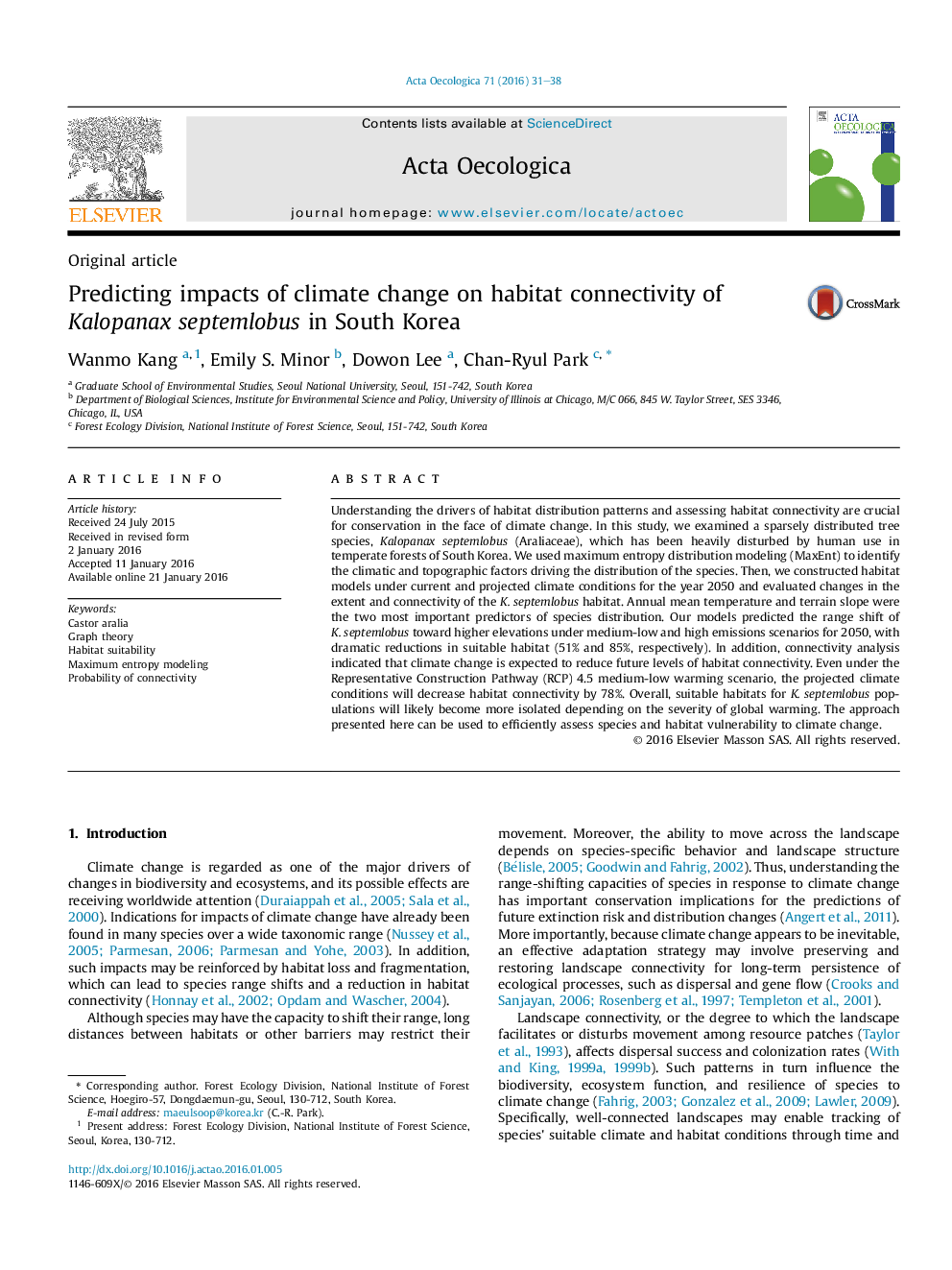| کد مقاله | کد نشریه | سال انتشار | مقاله انگلیسی | نسخه تمام متن |
|---|---|---|---|---|
| 4380733 | 1617701 | 2016 | 8 صفحه PDF | دانلود رایگان |
• We examine changes in habitat connectivity of Kalopanax septemlobus under current and projected climate conditions.
• We quantify these changes using species distribution modeling coupled with multi-scale network analysis.
• Annual mean temperature is found to be the most important predictor of species distribution.
• If warming continues unabated, most of the populations in South Korea will become physically isolated from one another.
Understanding the drivers of habitat distribution patterns and assessing habitat connectivity are crucial for conservation in the face of climate change. In this study, we examined a sparsely distributed tree species, Kalopanax septemlobus (Araliaceae), which has been heavily disturbed by human use in temperate forests of South Korea. We used maximum entropy distribution modeling (MaxEnt) to identify the climatic and topographic factors driving the distribution of the species. Then, we constructed habitat models under current and projected climate conditions for the year 2050 and evaluated changes in the extent and connectivity of the K. septemlobus habitat. Annual mean temperature and terrain slope were the two most important predictors of species distribution. Our models predicted the range shift of K. septemlobus toward higher elevations under medium-low and high emissions scenarios for 2050, with dramatic reductions in suitable habitat (51% and 85%, respectively). In addition, connectivity analysis indicated that climate change is expected to reduce future levels of habitat connectivity. Even under the Representative Construction Pathway (RCP) 4.5 medium-low warming scenario, the projected climate conditions will decrease habitat connectivity by 78%. Overall, suitable habitats for K. septemlobus populations will likely become more isolated depending on the severity of global warming. The approach presented here can be used to efficiently assess species and habitat vulnerability to climate change.
Journal: Acta Oecologica - Volume 71, February 2016, Pages 31–38
